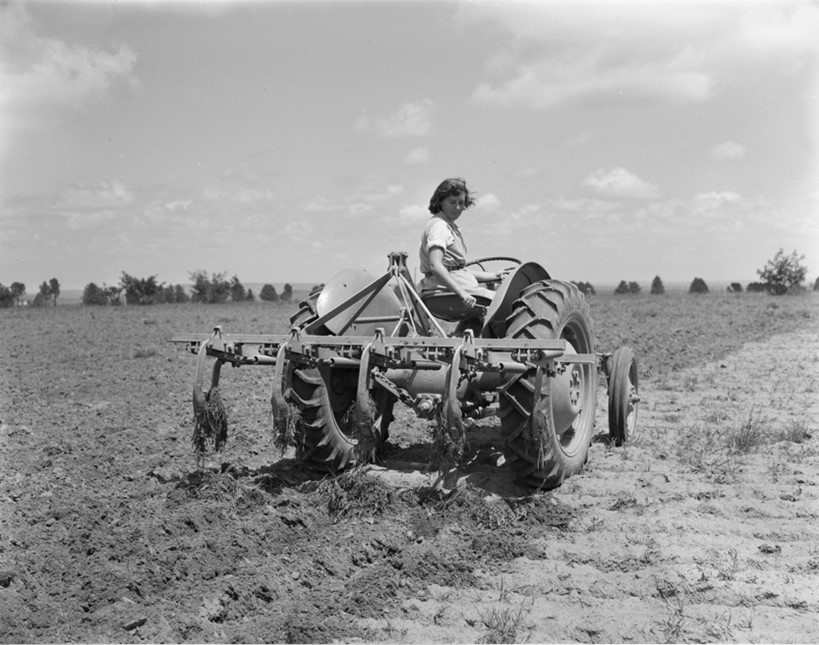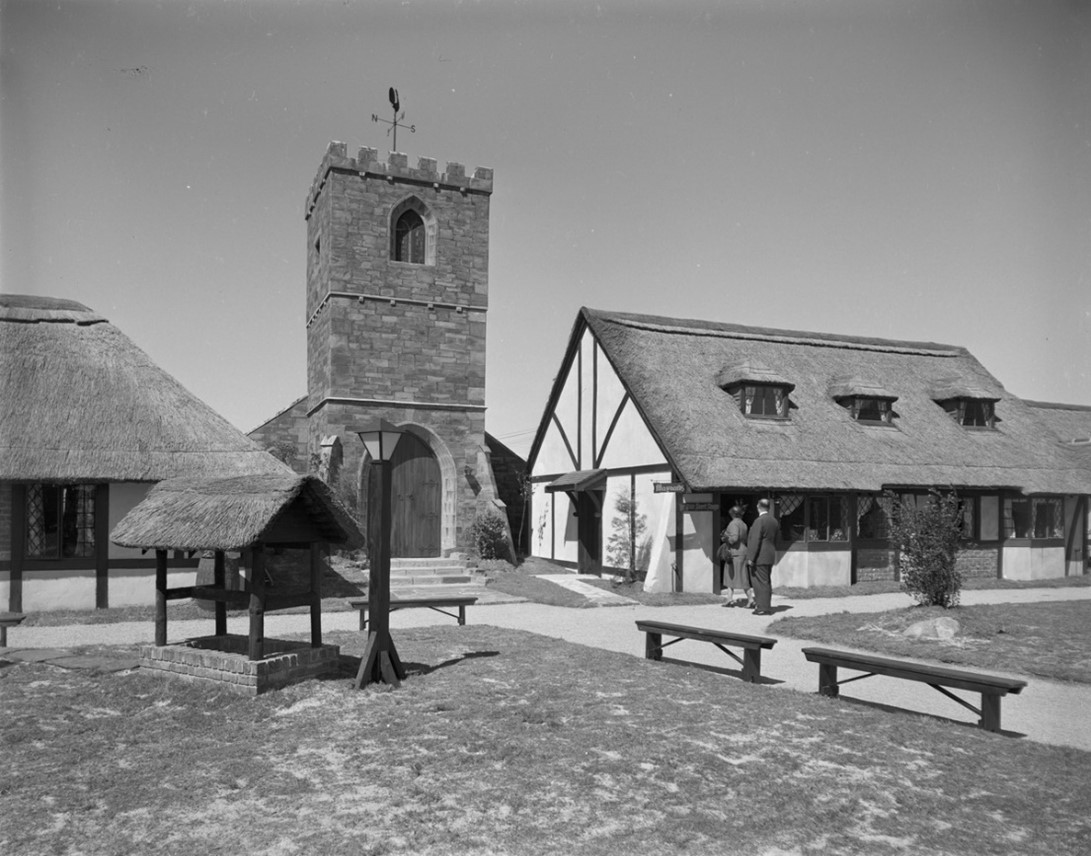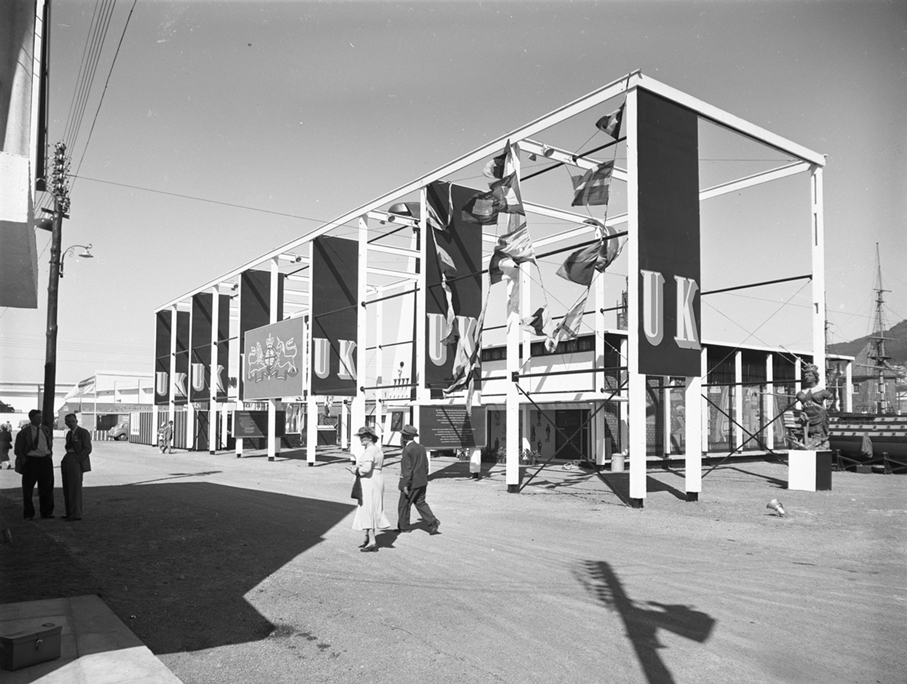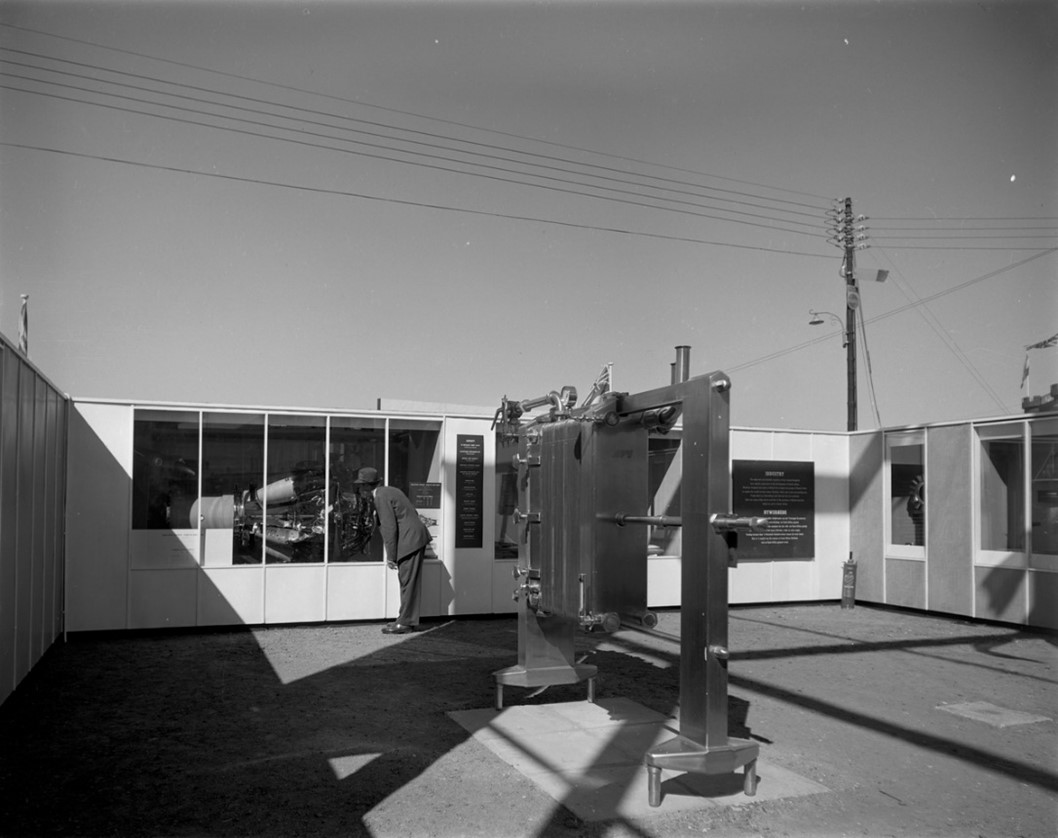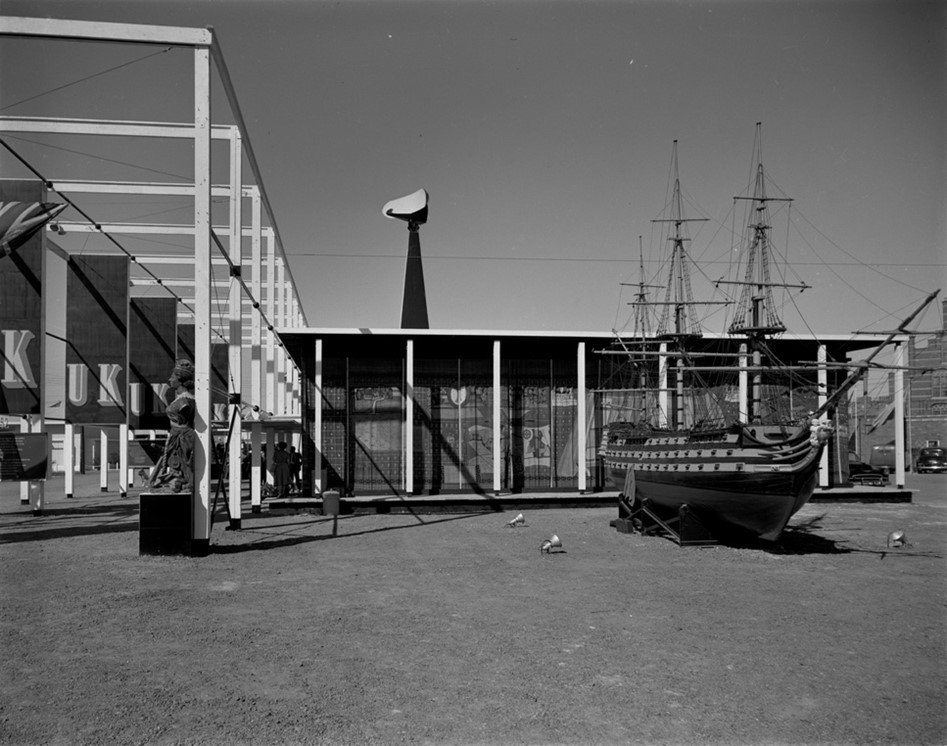From Britain to South Africa (and back again)
Michael O’Connell’s Diversity of British Farming wall-hangings and the Van Riebeeck Festival of 1952
In this post Ollie Anthony, Curatorial Assistant at the Pitt Rivers Museum, University of Oxford, shares fascinating details from a recently digitised series of extraordinary mid-century photographs. These previously unseen images provide evidence to fill gaps in the history of some of the most iconic items now held in the collection of The MERL.
Thanks to the recent digitisation of a photograph collection held at the Pitt Rivers Museum, it has been possible to fill an important gap in the history of Michael O’Connell’s captivating Diversity of British Farming wall-hangings, held as part of The MERL collection. The findings offer a unique glimpse into the re-use of the wall-hangings following their initial display at the 1951 Festival of Britain and situates them in an astonishing conjuncture linked to the establishing apartheid movement in 1950s South Africa.
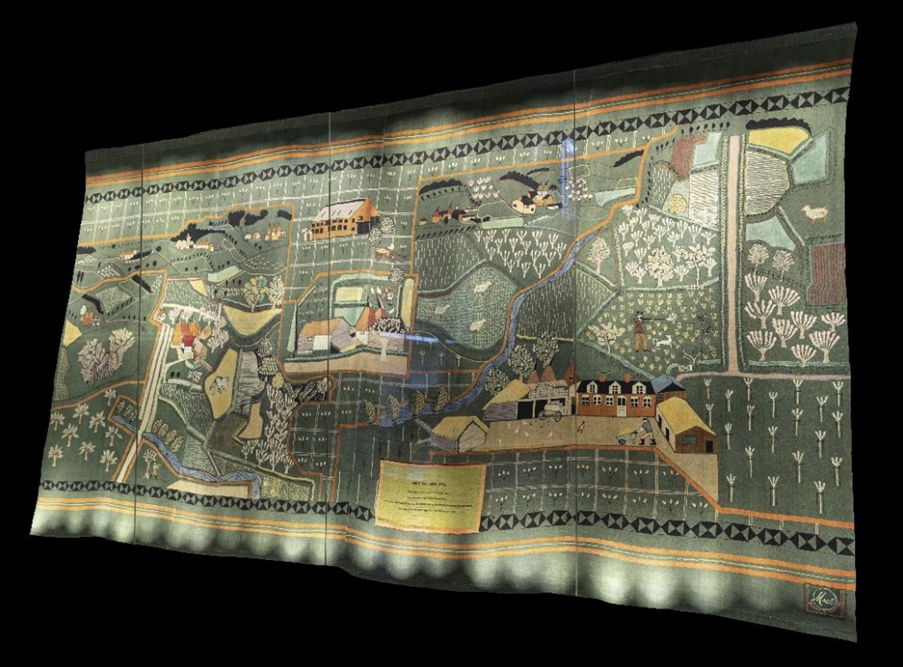
Comprising seven intricately designed fabric panels, the Diversity of British Farming wall-hangings together portray the British countryside and rural life. From depictions of farmers tending to their livestock, huntsmen out in the fields, and intricate webs of hedgerows and trees, their original display in the Country Pavilion on London’s Southbank during the Festival of Britain in 1951 is thought to have contributed towards a wider visual re-imagining of the history of the British land and its peoples.
In 2021, documents held at The MERL revealed that the extraordinary wall hangings were amongst materials sent on loan by the UK to South Africa in early 1952, following the Festival of Britain. As part of the 51 Voices online exhibition, which was developed to celebrate The MERL’s seventieth anniversary, Dr Ollie Douglas, Curator of MERL Collections, and Senior Professor Leslie Witz, University of the Western Cape, suggested that the loan to South Africa was likely due to their own national exposition: the 1952 Van Riebeeck Festival (see 51 Voices entry 41). Until recently, there have been few primary sources showing the exact nature and location of the wall-hangings at the festival, nor, more broadly, any evidence to suggest they actually made it into the final displays.
Thanks, however, to the recent digitisation of a photograph collection produced by South African-born, English-educated photographer Bryan Heseltine, it has been possible to identify the exact location of the extraordinary artworks within the festival and further shed light on their exhibitionary context at the height of South Africa’s apartheid era.
Bryan Heseltine Collection, Pitt Rivers Museum
The collection produced by Bryan Heseltine between the years 1948 and 1952 spans well over 2,000 photographs, many of them depicting the people and culture of Cape Town and nearby townships, including Windermere, District Six and the Bo-Kaap, as well as the purpose-built forced removal settlements of Nyanga and Langa.
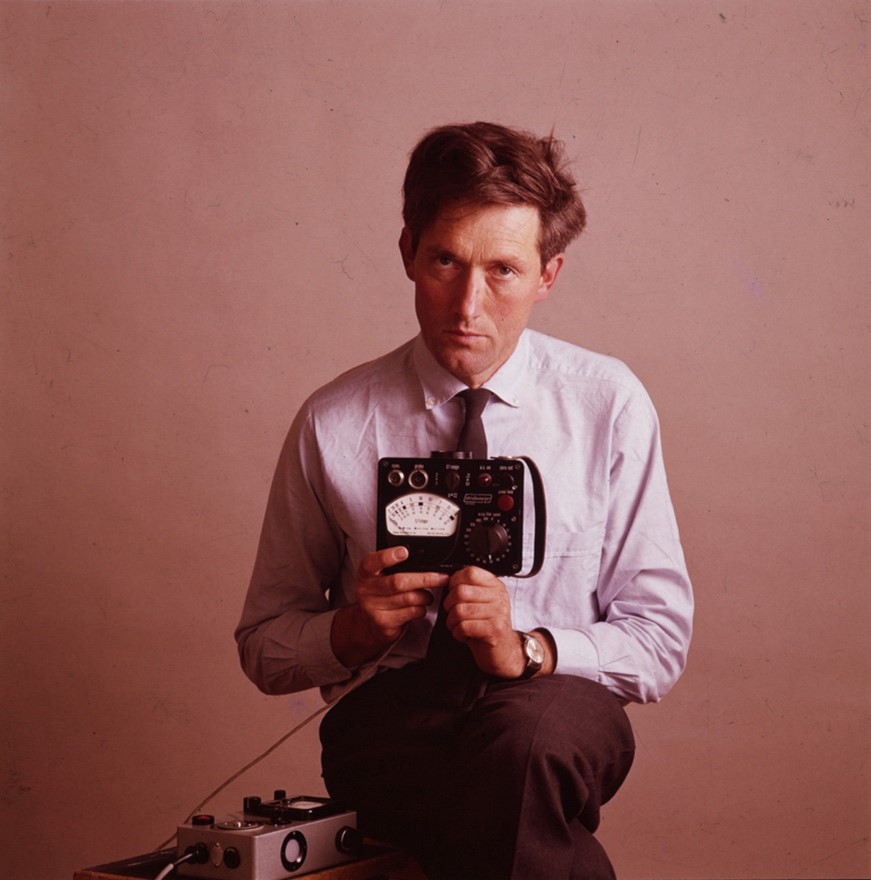
For around half a century, Bryan held onto his South African work, rarely exhibiting it. In fact, the family story goes that Bryan disposed of much of his work over the side of a ship upon his return to Britain. Then, since 2010, the remnants of his archive have been re-invigorated with life through the work of Professor Darren Newbury, University of Brighton, who, after being approached by Bryan’s family, oversaw the collection’s donation to the Pitt Rivers Museum. Darren has since written about and curated Bryan’s township photographs culminating in an exhibition entitled People Apart: Cape Town Survey 1952 held in 2012 at the Pitt Rivers Museum, as well as numerous published works (see Further Reading).
Picture 1: Staff of the Cleansing Branch of the City Engineer’s Department of Cape Town, South Africa, 1948-52. Photograph produced by Bryan Heseltine (Copyright Pitt Rivers Museum, University of Oxford, PRM 2022.1.330)
Picture 2: Boschetto Agricultural College, Harrismith, 1948-52. Photograph produced by Bryan Heseltine (Copyright Pitt Rivers Museum, University of Oxford, PRM 2022.1.141)
Last year, work was carried out to complete the digitisation of Bryan’s lesser-known commercial and studio photographs. The variety of subjects contained within this collection is immense, with depictions of everyday life around the southern Cape, such as the unloading of a waste carriage by staff of Cape Town’s Cleansing Branch, to slightly more staged encounters on the slopes below Platberg where students enact their daily life at South Africa’s only agricultural college for women. The breadth and depth of the collection speaks not only to Bryan’s skill as a photographer but also his privileged status as a white ‘European’ man to access various social and commercial settings around Cape Town.
Importantly to the discussion at hand, the collection also includes seventy-five photographs produced during the major celebrations and festival fair of the Van Riebeeck Festival, since labelled ‘Apartheid’s Festival’ by Professor Witz in his book of the same name. These photographs, now available to view on the Pitt Rivers Museum’s newly launched online collections database, offer a unique insight into the festival’s final displays.
Van Riebeeck Festival, 1952
Regarded by many at the time as a festival in grand fashion, the Van Riebeeck Festival has since become an historically fraught event. The apartheid government planned the festival as a celebration of the tricentenary anniversary of Jan Van Riebeeck’s arrival to South Africa in 1652, thus marking the founding of the South African nation and Van Riebeeck as its ‘founding father’; a narrative that only further instilled a history of white privilege and power within the country. Amongst other issues, the festival met criticism for its exhibitions of ‘natives’ resembling late nineteenth-century human zoos, seen at the likes of the World’s Columbian Exposition (also called the Chicago World Fair) in 1893. Aside from the Van Riebeeck Festival, these were declining in number by the early twentieth century.
Picture 1: Gold-Mining Pavilion, Van Riebeeck Festival Fair, Cape Town, 1952. Photograph produced by Bryan Heseltine (Copyright Pitt Rivers Museum, University of Oxford, PRM 2022.1.44)
Picture 2: Much-Binding-in-the-Marsh, Van Riebeeck Festival Fair, 1952. Photograph produced by Bryan Heseltine (Copyright Pitt Rivers Museum, University of Oxford, PRM 2022.1.37)
Picture 3: Shell Pavilion, Van Riebeeck Festival Fair, 1952. Photograph produced by Bryan Heseltine (Copyright Pitt Rivers Museum, University of Oxford, PRM 2022.1.40)
Thousands of visitors attended the festival where they could enjoy street parades, music, fairgrounds, cinemas, and numerous exhibitions and pavilions on display at the festival’s main attraction, the Festival Fair, held on Cape Town’s Foreshore (today the railroads). Among the exhibits featured at the Fair were displays relating to the industries of coal and diamond mining, agriculture, forestry and fisheries, as well as cutting-edge displays of science, technology and education. Two fanciful displays, one a re-construction of an English village named after a BBC radio series, Much-Binding-in-the-Marsh, and an entire Dutch street from Culemborg (Van Riebeeck’s birthplace), were also placed in juxtaposition to so-called ‘native villages’ in order to present a comparison between the rudimentary, primitiveness of indigenous peoples, and the sophisticated, civilized ‘white’ South African nation.
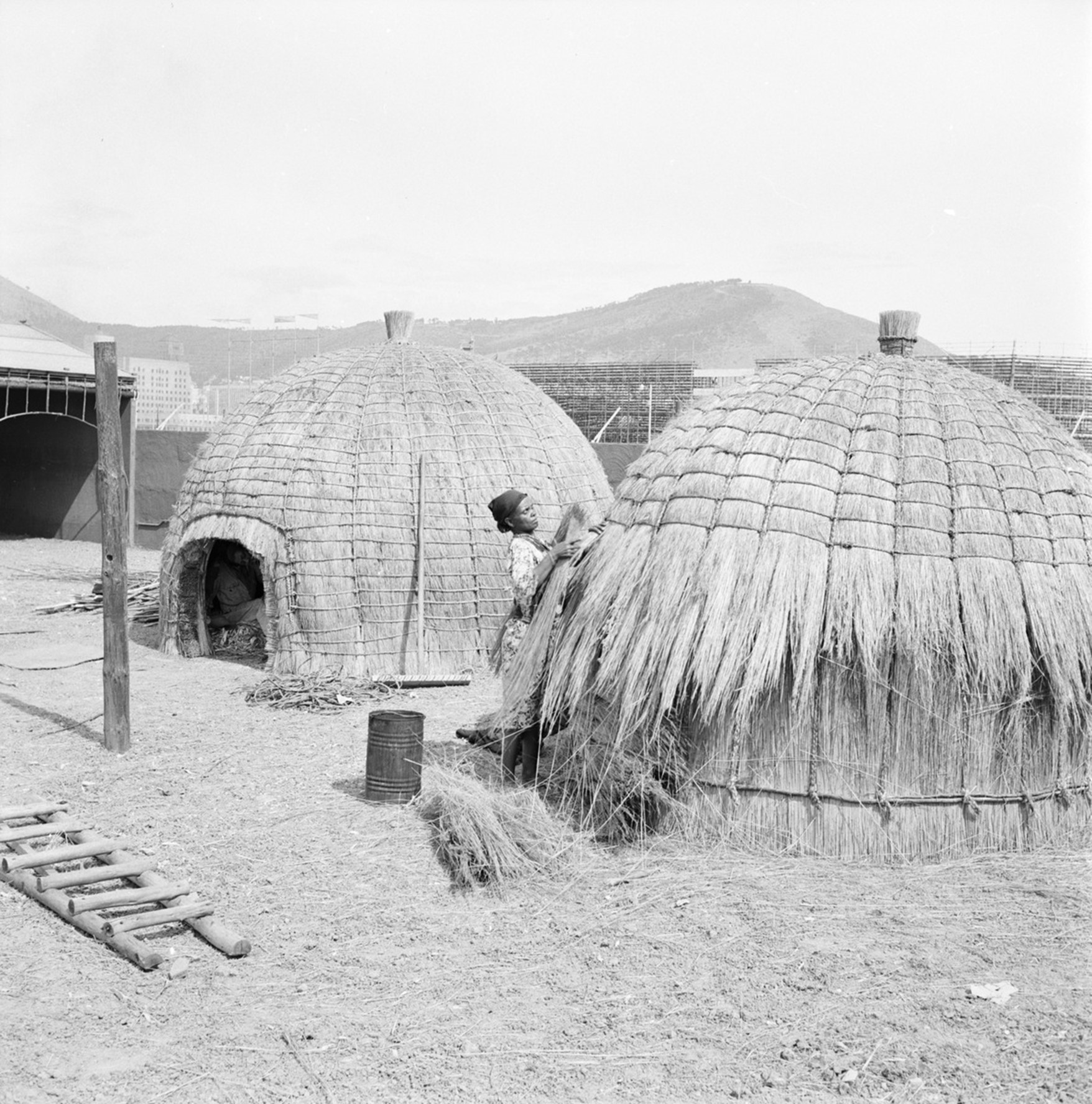
A short walk from the display of Culemborg was the UK’s only official contribution to the Van Riebeeck Festival, an exhibit aptly named the “United Kingdom Pavilion”. The pavilion, a collaboration between former Director of Architecture at the Festival of Britain, Sir Hugh Casson, and F. H. K. Henrion, was more broadly advertised in the festival guidebook as pertaining to the theme of the wider Van Riebeeck Festival – “We build a nation.”
The exhibit was formed of two main sections: first, a display of British parliamentary history, and second, a celebration of British technical achievements, including the latest farming equipment and a jet engine from the Comet aircraft. Together, the guidebook suggests, the areas were representative of the British nation’s “honoured place in the growth of present-day South Africa”.
Arranged in the UK Pavilion were a range of historical and cultural artefacts, archetypes of British culture and technology, with some previously having been displayed at the Festival of Britain. Among them, a vast scale model of HMS Victory, a ship’s figurehead propped up against the exhibit’s pergola, a radar or sculpture looming overhead, and, set along the outer perimeter of the main Parliamentary exhibit, Michael O’Connell’s Diversity of British Farming wall-hangings.
Picture 1: United Kingdom Pavilion, Van Riebeeck Festival Fair, 1952. Photograph produced by Bryan Heseltine (Copyright Pitt Rivers Museum, University of Oxford, PRM 2022.1.45)
Picture 2: A model of HMS Victory and a ship’s figurehead in the United Kingdom Pavilion, Van Riebeeck Festival Fair, 1952. Photograph produced by Bryan Heseltine (Copyright Pitt Rivers Museum, University of Oxford, PRM 2022.1.47)
Picture 3: Displays of technology in the United Kingdom Pavilion, Van Riebeeck Festival Fair, 1952. Photograph produced by Bryan Heseltine (Copyright Pitt Rivers Museum, University of Oxford, PRM 2022.1.50)
Picture 4: Michael O’Connell’s Diversity of British Farming, “Key” (MERL 63/18/2), “Yorkshire” (MERL 63/18/7), “The Fens” (MERL 63/18/8) and “Kent” (MERL 63/18/9) panels on display in the United Kingdom Pavilion, 1952. Photograph produced by Bryan Heseltine (Copyright Pitt Rivers Museum, University of Oxford, PRM 2022.1.51)
Picture 5: Michael O’Connell’s Diversity of British Farming, “Scotland and Wales” (MERL 63/18/3) and “Cheshire” (MERL 63/18/5) panels on display in the United Kingdom Pavilion, 1952. Photograph produced by Bryan Heseltine (Copyright Pitt Rivers Museum, University of Oxford, PRM 2022.1.591)
The recently digitised photographs shown here provide solid evidence that the wall-hangings held at The MERL did make it into the final displays of the United Kingdom Pavilion at the Van Riebeeck Festival Fair. Thus, significantly to the Museum, it is now possible to fill an important gap in the object history of O’Connell’s artworks. Of the seven fabric panels originally made by O’Connell, visible among Bryan’s photographs are the Yorkshire (MERL 63/18/7), The Fens (MERL 63/18/8), Kent (MERL 63/18/9), Scotland and Wales (MERL 63/18/3) and Cheshire (MERL 63/18/5) panels as well as the Key (MERL 63/18/2).
From their initial display in the Festival of Britain, to the Van Riebeeck Festival in South Africa, and thereafter back to Britain for various agricultural displays, Michael O’Connell’s artworks have become icons of British agricultural heritage on the international stage. Moreover, their display in South Africa marks an interesting stage in their biography, implicating them in wider debates surrounding the role of settler nationalism in shaping the apartheid movement in 1950s Cape Town. In their 51 Voices discussion in 2021, Dr Ollie Douglas and Professor Leslie Witz acknowledged the importance of confirming the whereabouts of the wall-hangings during the Van Riebeeck Festival. Perhaps, now evidence has come to light, we might be able to further re-imagine these artworks and promote a more inclusive and shared interpretation of their provenance going into the future.
Further Reading
Leslie Witz, Apartheid’s Festival: Contesting South Africa’s National Pasts (Bloomington and Indianapolis: Indiana University Press, 2003)
Leslie Witz, Museum Times: Changing Histories in South Africa (Oxford and New York: Berghahn Books, 2022) [esp. chapter 6]
Leslie, Witz, ‘From Langa Market Hall and Rhodes’ Estate to the Grand Parade and the Grand Parade and the Foreshore: Contesting Van Riebeeck’s Cape Town’ in Kronos, 25 (1998) pp.187–206, (https://www.jstor.org/stable/41056433)
Christopher Morton and Darren Newbury, The African Photographic Archive: Research and Curatorial Strategies (Bloomsbury: London, 2015) [esp. chapter 9]
Darren Newbury, People Apart: 1950s Cape Town Revisited (Black Dog Publishing: London, 2013)
Darren Newbury, ‘Relocating the Heseltine Photographic Collection at District Six Museum’ in African Arts, 48 (2015), pp.64-77, (https://www.jstor.org/stable/24720691)
Darren Newbury, ‘‘An invitation to visit Windermere’: Moments of Departure and Return in the Biography of Bryan Heseltine Collection’ in Photographs, Museums, Collections: Between Art and Information [ed. E. Edwards and C. Morton] (London: Bloomsbury, 2015)


